If you are a beginner considering raising quail on a home farm, this post will give you everything you need to know.
Quail are a species of small compact birds that can easily be reared on a home farm. They provide a continuous source of nutritious eggs, tasty meat, and feathers. Quail can be kept in small enclosures indoors or outdoors, making them ideal for most climates and both urban and country farms.
Let’s learn about housing, care, handling, usable parts, dealing with diseases, nutrition, where to purchase quail, and how to protect them. I will cover each topic in detail to give you all the information you need to get set up and start raising quail quickly, easily, and economically.
What are quail?
Quail are small, ground-dwelling birds from the Phasianidae family, closely related to pheasants and partridges. They are known for their captivating beauty and gentle nature.
Learn how to raise your own quail and have an unlimited supply of eggs and meat.
Unlike chickens, which are considered to be domesticated, quail are still considered to be game birds. With over 130 species worldwide, these fascinating creatures come in various sizes and colors, ranging from the vibrant California quail to the delicate Japanese quail.
Not all quail are suitable for home farms. The most common species for backyard farmers are the Coturnix Quail. They adapt quickly to a variety of conditions and are low-maintenance. This makes them a popular addition to a farm homestead.
What are the benefits of raising quail?
What I like about quail the most is how easy it is to raise them, and that everything in a quail is either usable or can be sold for a profit.

They offer delicious meat. Quail meat is tender, flavorful, and sought after by culinary enthusiasts.
The eggs are nutritious, delicious, and healthy. Quail eggs are not only delicious but also highly nutritious. They contain a higher proportion of protein and essential nutrients when compared to chicken eggs. They are prolific layers too, so you can collect fresh eggs every day.
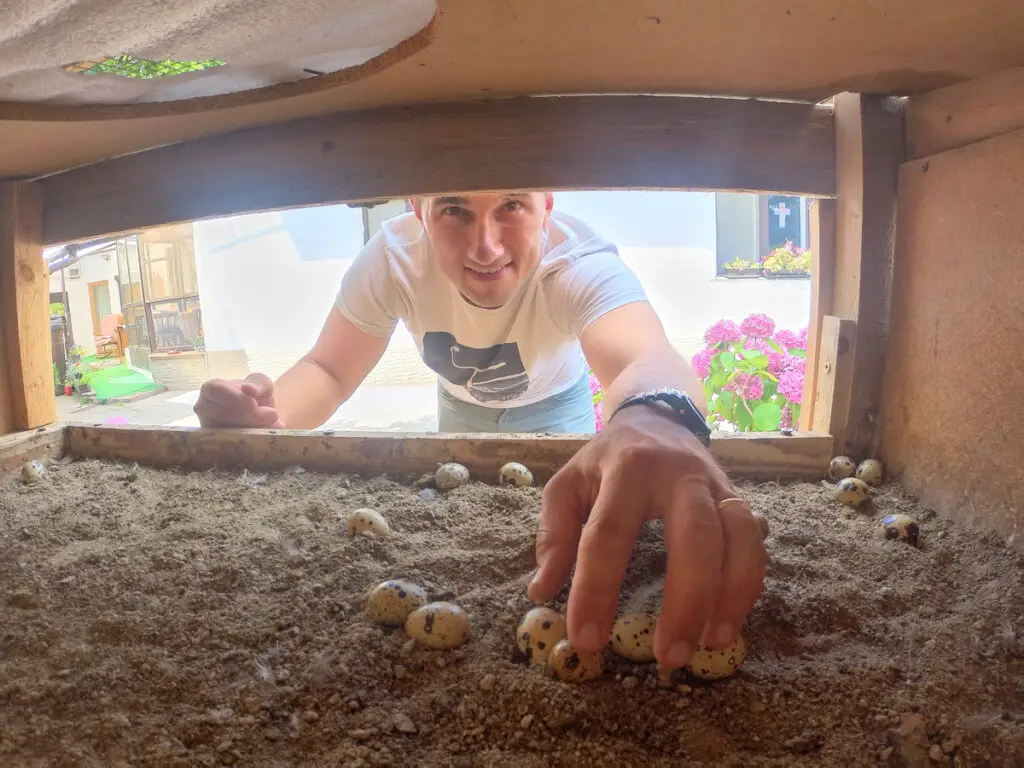
Quail are easy to raise. Quail are hardy and have low maintenance requirements. This makes them an ideal choice for beginners.
They are small and compact. Quail are known for their small size, which makes them highly suitable for backyard or urban farming. Their compact nature allows for efficient use of space and makes them easier to handle and manage than larger poultry species.
Quail do well in any climate. Quail are remarkably resilient birds, capable of withstanding both hot summers and cold winters. They can be raised in homesteads in a wide range of regions and climates.
They are not as noisy as chickens. Quail are relatively quiet birds when compared to chickens (I wrote about it here). This makes them a great option for noise-sensitive areas or urban environments.
You can raise quail for profit. Raising quail can be a profitable venture for a small home business. There is a constant demand in the industry for quail eggs, meat, and feathers.
They mature faster than other poultry breeds. Quail mature at about 7 weeks and lay eggs sooner than most other poultry. This reduces your production time, translating into better cash flow.
Quail offer a great learning experience for children. Raising quail can be a wonderful educational experience for children, teaching them responsibility and compassion and providing hands-on learning about animal care and sustainable food production.
Quail are a cost-effective option to get started on poultry farming. Getting set up and started is not a costly exercise. You can begin with a few quail in a small coop and take it from there.
How to get started
Getting started does not require a huge outlay of money. Start small with a handful of quail and grow your farm from there.
Housing
To get started, you will need adequate housing. Buy or make a suitable enclosure, such as a well-ventilated coop or a wire mesh cage. Ensure that the housing will protect quail from predators and extreme weather conditions and allow sufficient space for comfort and movement.
We’ll get into housing in more detail in a bit.
Food and water
You will need a sturdy feeder that can hold and dispense their feed. It should be easy to remove and clean regularly.
There are various types of quail feeders available, including trough feeders, tube feeders. , gravity feeders, and hanging feeders. I find that a simple plastic food container with holes drilled on the sides works great for me. It holds a lot of food and helps minimize food waste.
Ensure that your quail have access to food at all times. They will not overeat, but they can turn against each other and display aggression when left hungry.
Water is vital for quail. Provide a waterer that gives easy access to clean, fresh water. Quail require constant hydration for their overall health and well-being. The waterer should be easy to remove and clean regularly. You can consider using waterers with built-in features that prevent debris or dirt from entering the water. A mason jar-type waterer is OK, but it needs regular cleaning. I prefer poultry cup waterers for my quail. It eliminates spillages and it’s easy to keep clean.
Monitor the state of the waterer and the condition of the water. Don’t allow water to stand in direct sunlight, become too hot and build up aglae. In winter, ensure the water does not freeze, making it impossible for your birds to drink. For large flocks, provide enough waterers to ensure that all the birds can easily access water at any time.
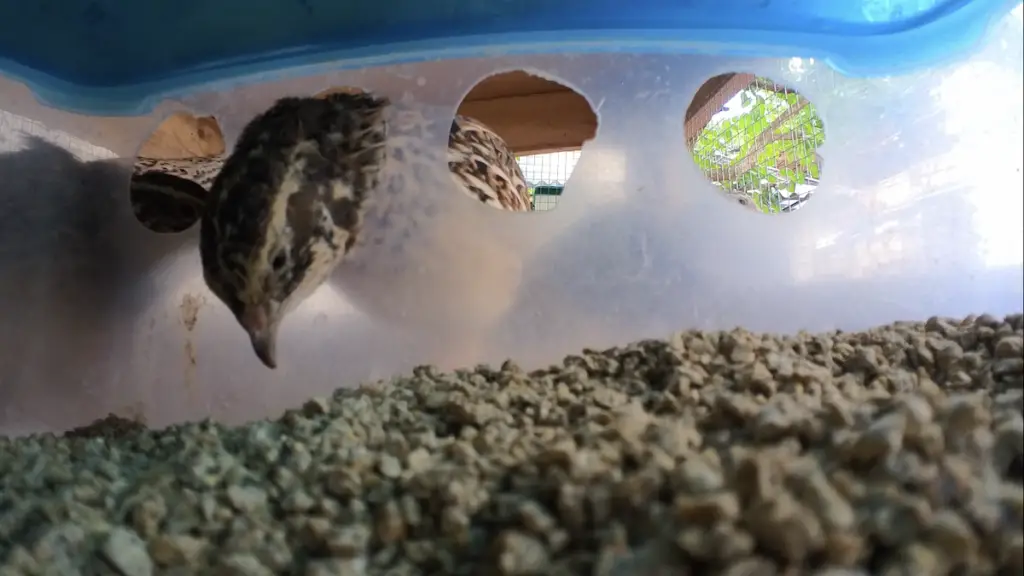
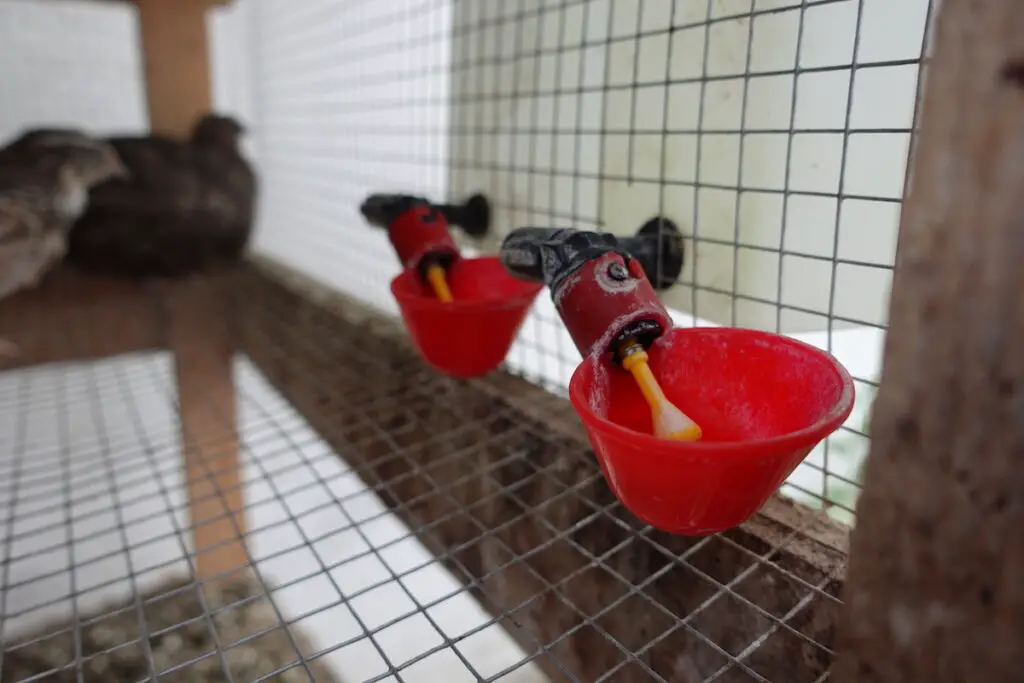
Diet
You need to feed your quail a balanced diet to ensure optimum health. You can purchase specially formulated quail feed that contains a balanced blend of grains, seeds, vitamins, and minerals to promote optimal growth, egg production, and overall vitality. Game bird feed is ideal for quail as it is designed for birds in the pheasant family and contains extra protein.
Feed starter feed to your quail chicks until 3-4 weeks of age, and transition to layer feed over a few days period.
Alternatively, you can make your own feed that includes bread, carrots, tomatoes, apples, chicken feed, celery, green peppers, and rice. Do not feed quail meat, chocolate, uncooked potatoes, parsley, grape seeds, citrus fruits, avocado, rhubarb, salty foods, or caffeine. Check this guide to learn more about what quail can and can’t eat.
Mixing your own quail feed is not difficult, but I have personally not experimented with it. I find it convenient to buy the ready-made quail feed.
Covey size
Decide how many quail you want to start with. You can have as few as one or two, depending on your plans. Regular quail hens lay approximately 320 eggs a year (almost an egg a day), while jumbos lay slightly fewer, but larger eggs.
I keep both jumbos and regular-size quail, but I prefer my jumbos because they produce more meat, and it’s easier to handle their eggs.
If you want to breed quail, you should plan to have 4-5 females for every male. Maintaining a healthy rooster-to-hen ratio is important to keep your quail happy and stress-free.
Too few hens will result in them getting worn out by excessive breeding. Too many roosters will result in fighting and aggression in the cage or coop.
Usable parts of quail
Nothing goes to waste when it comes to quail. All parts can be used at home or sold as income for your small home business.
Quail eggs are a delicacy sought after by foodies in high-end restaurants. They are known for their rich flavor and nutritional value. Quail eggs can be used in baking, pickling, salads, and as garnishes.
As a healthy choice, they can be blended into smoothies and shakes. Health fans even consume them raw for their protein, vitamin, and essential minerals. The eggs feature beautiful colors, making them great décor items in homes and hospitality venues and adding a lovely touch to arts and crafts projects.
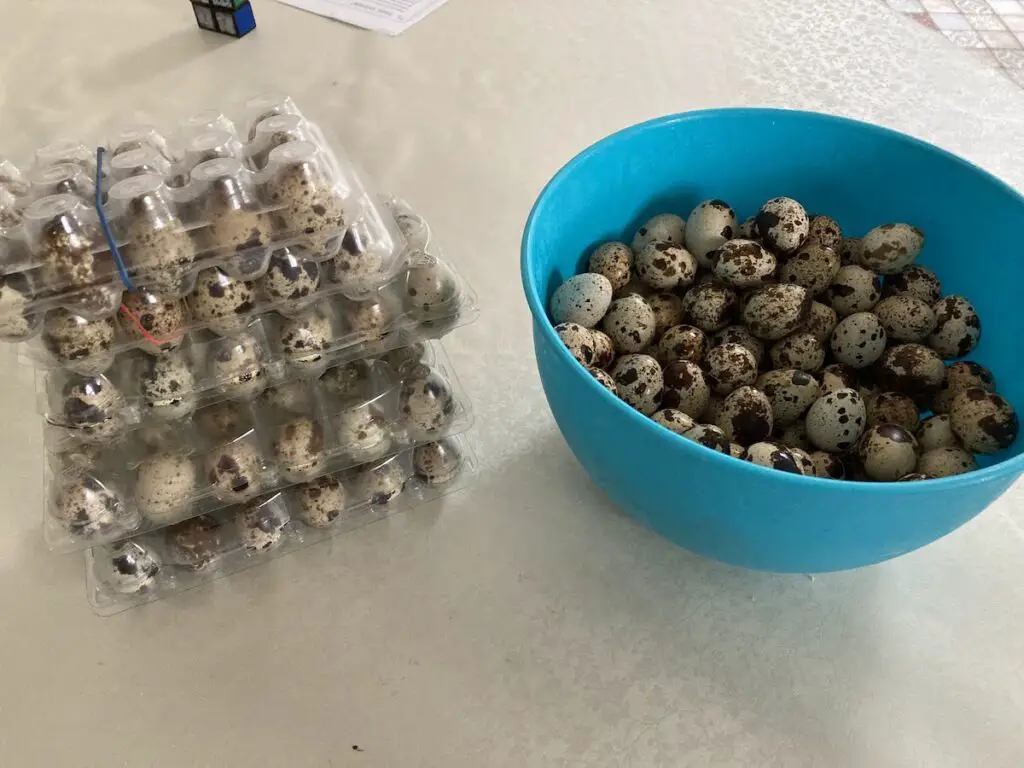

Quail meat is highly sought after for its tender texture and delicate, slightly gamey flavor. As a versatile protein source, it can be used in many recipes grilling to roasting, stir-fries, casseroles, sautés, skewers, and stews.
Shredded quail meat adds a gourmet touch to wraps, salads, and grain bowls. Quail meat is lean, low in cholesterol, and rich in essential nutrients, making it a delicious and healthy choice for meat lovers. It combines wonderfully with hearty vegetables, herbs, and seasonings, perfect for making comforting and flavorful one-pot meals.
Quail manure is rich in nitrogen, phosphorus, potassium, and essential nutrients. This makes it a valuable organic fertilizer for gardens and crops. Use it on your homestead or sell it to other small farm owners or gardening shops.
Properly composted quail manure will enrich the soil, improve its fertility, and enhance overall plant health. And it is 100% natural, containing no harmful chemicals or additives.
Quail feathers are a wonderful addition to craft projects like dream catchers, wreaths, and feather art. They can be incorporated into jewelry making for earrings, necklaces, hair pieces, bracelets, and other accessories.
Cosplay outfits, dress-up costumes, theatrical productions, masquerade parties, and fashion shows often make use of quail feathers. Quail feathers can be utilized in home décor to create a natural and rustic ambiance and can be displayed in vases, wall hangings or used as decorative accents in table centerpieces.
For outdoor lovers, quail feathers are a useful component in fly fishing, as they provide attractive and durable materials for creating effective lures. Quail feathers can even be used in schools as a hands-on learning experience for science projects, biology classes, or bird identification exercises.
You can make the most of their resources using the different parts of quail. Enjoy their eggs and meat in delicious meals, use their manure to enhance soil fertility for plants or crops, and explore creative pastimes with their feathers.
Quail housing requirements
Setting up a proper quail enclosure is vital for your bird’s well-being, happiness, and health. Happy quail will lay eggs and breed, but unhappy quail will be stressed, fall ill, and even die. Housing can be a simple coop, an aviary, a cage, or an elaborate enclosure established indoors or outdoors.
I have a full article that details what you should consider when building a quail dwelling, but here are the most important aspects you should consider.
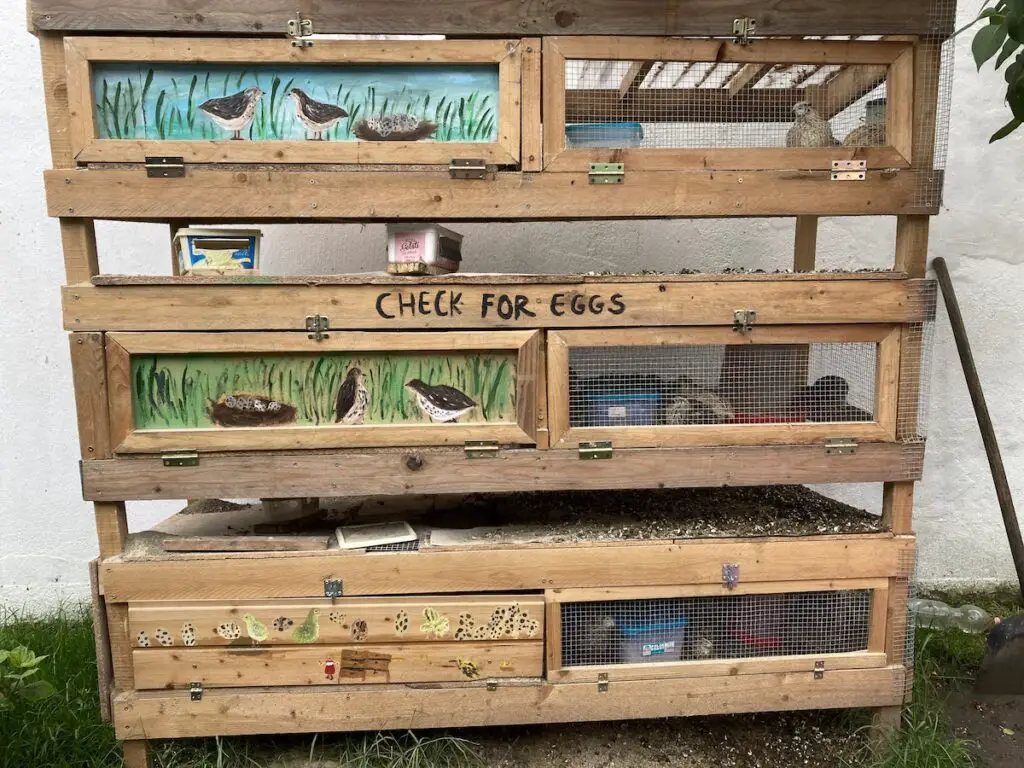
Protection
The first factor to consider is safety and protection against predators. Quail are tasty, easy targets for almost any omnivore; they are at the bottom of the food chain.
Snakes can slither into a cage via the open floor or roof. Small rodents can bite through wood panels and enter via openings in mesh walls.
If your cage is outdoors, ensure that predator birds cannot swoop in and pick up a bird for dinner. Home pets are also a great source of danger to quail. Dogs may sniff them out and create undue noise and stress. Cats are agile and can easily jump into open coops. Ensure that your enclosure has secure walls that predators cannot breach.
I use the same hardware cloth for the sides as protection as the flooring of my cage, and it offers sufficient protection for my birds.
Consider also protection against the weather. Ensure that your quail have places to hide and withdraw from rain, snow, and wind. This is an important point, especially if you keep your quail in outdoor cages.
Floor
The floor of your enclosure can be mesh or solid. There are pros and cons for both.
Solid floors won’t damage the bird’s feet and should be covered in a litter made of sand, soft wood shavings, or straw.
Baby quail can’t walk on mesh floors in the first days. Cover your brooder floor with pine shavings or pellets, or with paper towels.
Mesh floors allow droppings to fall through, keeping the coop clean. Mesh also allows for ventilation and airflow. To prevent predators from entering the enclosure via the floor, choose a sturdy mesh with smaller gaps (I use a 0.5″ x 0.5″ hardware cloth, which is ideal).
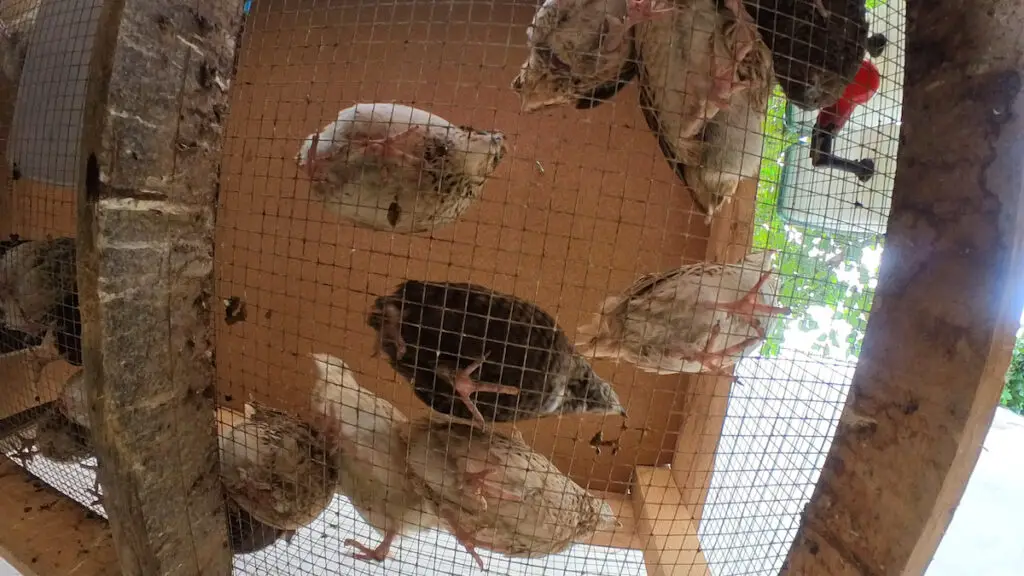
Space
The recommended average space for regular quail is 3.5 quail per sq ft. Jumbos require slightly more space (3 quail per sq ft). Overcrowding will create distress and fighting.
The ceiling can be 12″ tall, or if you keep the birds in an aviary, make it 6-7 feet tall so the birds can flush (sudden birds of flight to up to 5-6 feet, followed by a slow descent).
Feeder and waterer
Provide feeding and watering stations. Ensure that they are easily accessible so you can refill and clean them regularly. Clean your enclosure regularly by removing droppings, replacing flooring, and trimming dead plants and shrubs. Check for breakages in mesh walls and floors or rotting wood, and repair as soon as possible to prevent predators from entering your coop.
Light
Your quail need at least 14 hours of light a day, which can be sunlight, artificial light, or a combination of both. You can read more on the lighting requirements in this article.
If your quail are outdoors, ensure they can take cover to avoid overheating in direct sunshine.
If you are installing artificial lighting, ensure the birds cannot touch a hot bulb and get burned or electrocuted. Artificial lighting should be adjustable to mimic natural conditions like sunrise and sunset.
Features
It’s not strictly necessary, but you can enhance your coop by including natural items that quail would find outdoors. Add plants, shrubs, branches, small hay bales, or even pot plants.
Quail love dust baths as well, and it helps them with feather maintenance and cleanliness. Quail, like many bird species, engage in dust bathing as a natural and instinctive behavior.
The dust bathing area can be a shallow container filled with dry soil or sand in their enclosure, or you can fill half of your cage with sand. My quail love spending time here, and they lay most of the eggs in the sand.
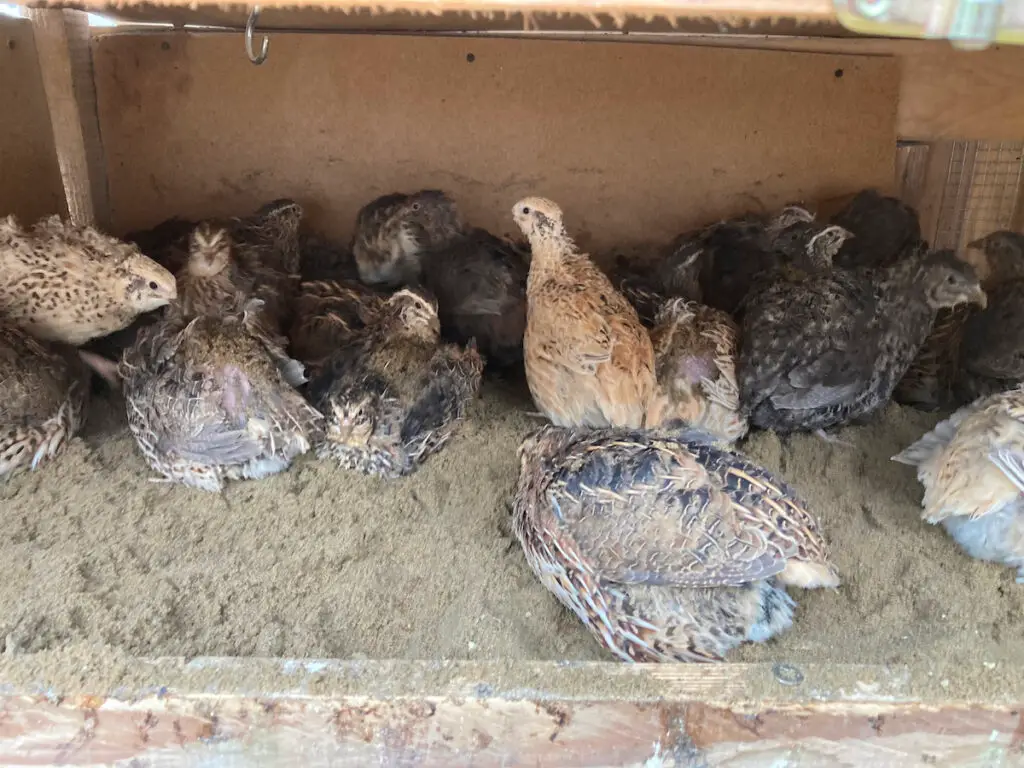
Dust bathing helps to clean feathers and keep them free from parasites, such as mites or lice. Fine dust particles coat their feathers and absorb excess oils and moisture, helping to maintain feather condition and prevent matting.
Dust bathing is also a form of social interaction. Quail are sociable birds, and you will often see multiple quail dust bathing together for fun.
Handling quail
Quail are sociable, friendly birds that love being cared for. They respond to gentle treatment and quiet, stress-free environments. They are susceptible to their surroundings, and you will easily notice whether you have a happy flock.
Quail prefer not to be disturbed. They are easily startled, and too much handling causes them stress. Find a spot in your home where they can live undisturbed by other animals around your home and they are not exposed to sudden loud noises.
You can still pick up your quail, and when you do, follow these steps:
- Position one hand over the quail’s back and wings, gently but firmly securing the wings against its body.
- Use your other hand to support its body from underneath, cradling it gently.
- Slowly lift the bird keeping a firm but gentle grip to prevent it from slipping or flapping its wings excessively.
- Avoid squeezing the bird and gently move it to its new location.
When quail get stressed, they start flapping their wings and they kick with their feet. Their claws are quite sharp, and it can be quite painful when they kick you. If the bird has got its wings and feet out of your hand, you can still hold it gently but firmly around the torso. It will calm down after a few seconds, and you can even hold it in your palm or place it on your shoulder.
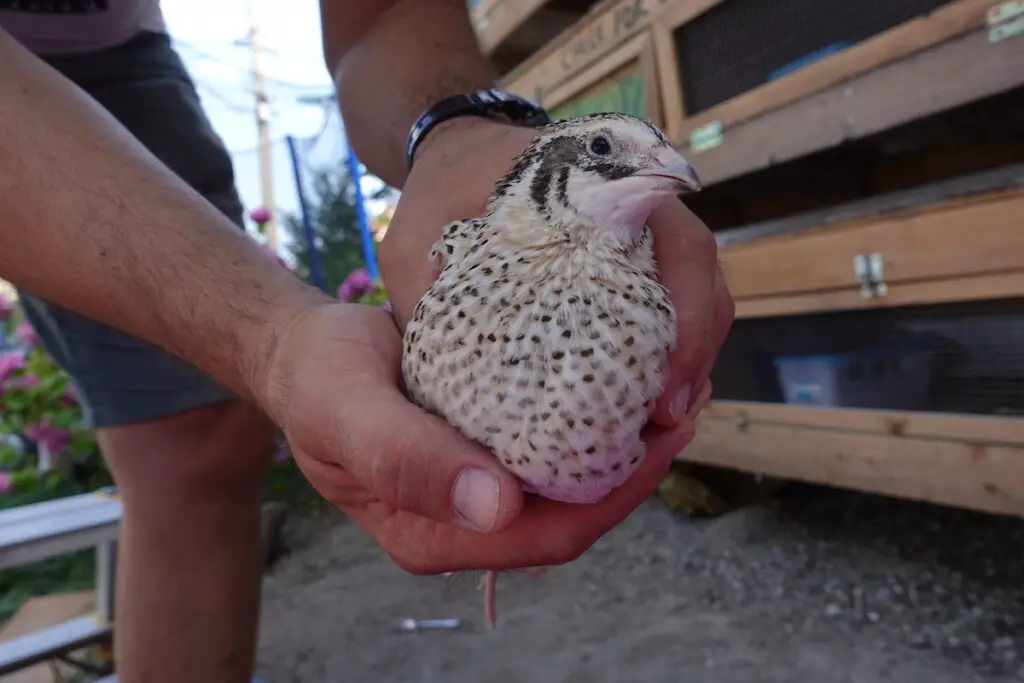
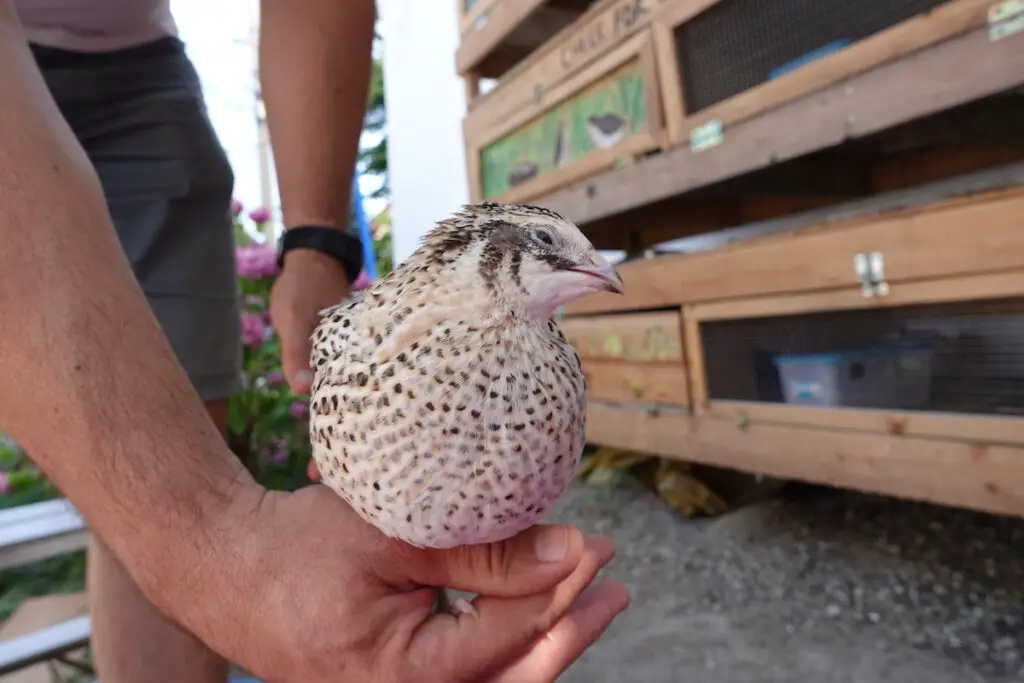
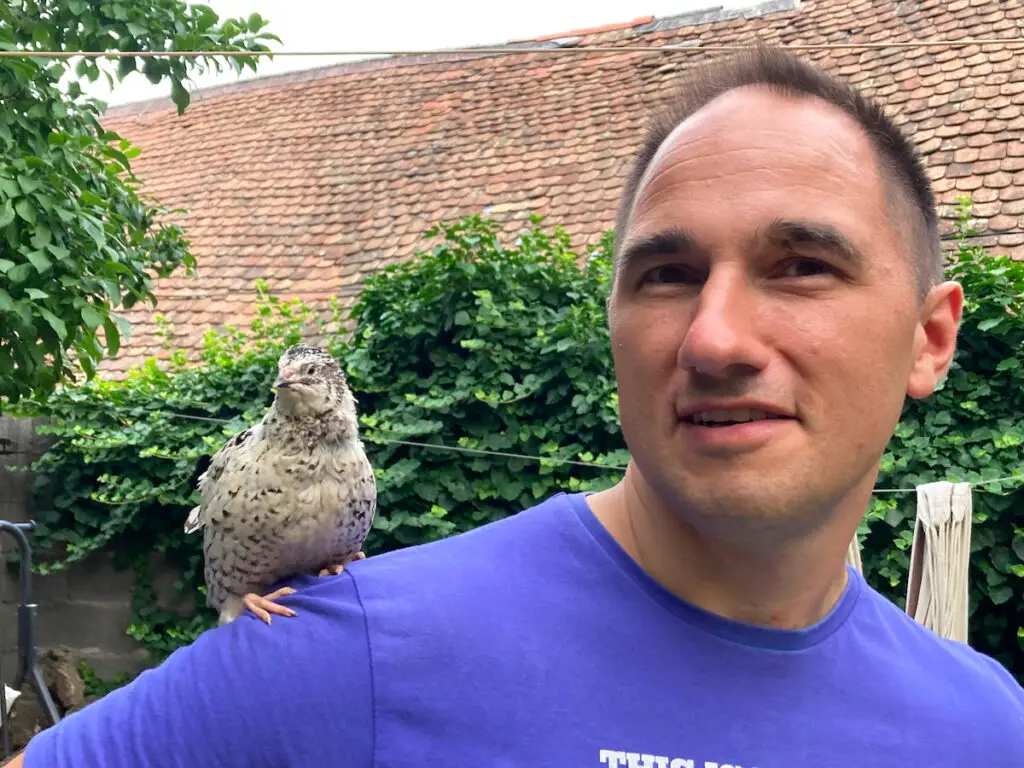
Where to purchase quail
Getting your first quail is not difficult.
A good option is to approach a breeder in your area. They offer healthy quail chicks or adults from reputable sources. You can discuss the breed and number you require that aligns with your goals and available resources. These birds are usually healthy and free from diseases or abnormalities. Breeders are a great source of knowledge and skill, and you will stand to learn a lot from this relationship.
You can also buy live quail from breeders online. My Shire Farm is one of the best-known quail breeding farms in the US, with a large YouTube viewership and excellent resources to get started.
You can also buy quail from friends or other trustworthy acquaintances. They would have your best interests in mind, and you won’t need to worry about ill or diseased birds. Fellow quail enthusiasts may also be able to provide referrals to reputable sources.
You can also find Facebook, and other online groups for purchasing quail. Read the reviews and posts and ensure you are happy that the group is reputable and ethical. These online communities dedicated to quail enthusiasts or poultry farming have members offering quail for sale or exchange. They can also provide valuable insights and recommendations on acquiring quail.
As an alternative to buying live quail, you can buy hatching eggs and place them in an incubator. Under the right conditions, baby quail should hatch in 16-18 days. This article explains how you can get excellent hatch rates every time.
Common quail disease, prevention and treatment
Like all poultry, quail are susceptible to disease. Keeping your quail flock healthy is important for their overall well-being and productivity.
Lice and mites
Lice and mites are common parasites that can infest quail, causing discomfort and health issues. These tiny pests live on the skin, feathers, and bedding of quail. They feed on their blood and skin debris. Infestations can lead to itching, feather damage, decreased egg production, and even anemia in severe cases.
Once you have identified infected birds, remove them to a quarantine area. They can be treated with dusting powders, sprays, or dips specifically formulated for poultry. Follow the instructions provided by the product manufacturer and seek help from your local vet if required. Clean and disinfect the entire coop, including bedding, perches, nesting areas, food containers, and water containers.
Respiratory issues
Ammonia from quail droppings can be hazardous to your quail. Droppings contain uric acid, a waste product decomposed naturally by bacteria, releasing ammonia gas. This gas has a pungent odor and can accumulate in the coop or housing if it is not adequately ventilated.
High levels of ammonia can cause respiratory issues and irritation in quail. This can lead to decreased egg production and quail that are stressed and ill.
Ensure their dwelling has proper ventilation to exchange fresh air and disperse ammonia build-up.
Regular cleaning of your coop goes a long way toward reducing the risk of disease.
Final thoughts
Quail are cute small birds that are easy to raise and low-maintenance. They thrive in diverse environments and are known for their nutritious, tasty eggs and flavorful meat. Quail offer a rewarding experience for small-scale farmers as a source of food for the home, or a source of income for a small business.
Purchase your quail from a reputable source. Ensure that you have set up the cage or coop correctly with adequate space, feeders with suitable game bird feed, waterers with fresh water, hiding places, and sufficient light.
Quail do best in quiet, undisturbed environments. Ensure that they are safe from predators, extreme heat or cold, and have adequate ventilation. Check your birds regularly for any sign of infestations of lice and mites, and take immediate precautions to remedy the situation. Do not over-handle your quail! They are sensitive and don’t enjoy being held.
Once you have the basics in place, you are ready to embark on a rewarding journey of raising quail for eggs, meat, feathers, or breeding.

